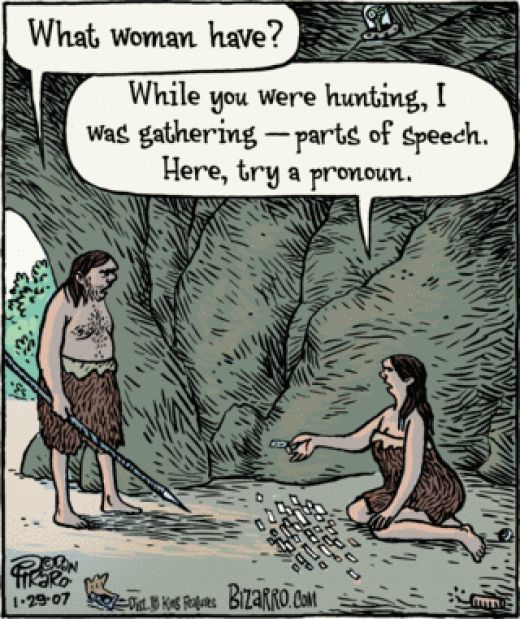Is It a He Or a She?!? Speech Therapy Activities for Pronouns!
With so many speech therapy activities that emphasize articulation, fluency, and pragmatic language use, pronouns can sometimes get overlooked. Does your youngster mix up his “he’s” and “she’s?” It’s perfectly normal for a young child to occasionally mix up pronouns, and remember that every child’s language development is different. The typical toddler will begin to learn more nouns and pronouns when he reaches 24 to 36 months of age. When your kidlet is 24 months old, he will typically begin to use “I,” “me,” and “you” correctly; however, it’s common to mix up the “I” and “me.” He’ll likely master it by the time he reaches the ripe old age of 36 months. But you can help encourage your child’s language development and correct his pronoun usage with at-home speech therapy techniques. Collaborate with your youngster’s speech-language pathologist (SLP) for age-appropriate techniques, and check out our suggested speech therapy activities below for inspiration.
Visual Cues and Modeling
Modeling proper language patterns is one of the best and easiest speech therapy activities that parents can do with their youngsters. It simply means that you’re using proper language to converse with your child, and that you’re conversing with him as often as possible to expose him to language. When your child struggles with pronouns, it can be particularly helpful to include visual cues along with language modeling.
So, for example, let’s say that Michael mixes up “I” and “you” frequently. He says things like, “You hungry” when he really means that he’s hungry. His mother, Betty, will expand his language, model proper language, and use a visual cue to correct him. She’ll say something like, “Are YOU hungry, Michael? I’M hungry, too.” (Emphasis added intentionally.) Betty will point to Michael when she says “you” and to herself when she says “I’m.” Use this technique for other pronouns that your youngster struggles with, and add cues as often as possible.
Card Matching Game
Kids love games, and amping up the fun factor of speech therapy activities is a great way to keep them interested and learning about pronouns. Try a card matching game with your child. Create a bunch of cards with different pronouns, and the same number of cards with sketches that match the pronouns (i.e. “It” and a drawing of a piece of fruit). Lay them out face-down – pronouns in one area, drawings in another. Instruct your child to flip over one card from each pile at a time. If the pronouns don’t match, the cards must be flipped back over. The challenge is to remember where the card that matches that pronoun is; if your child remembers, he can flip over a third card to match a pronoun.
Jumping Game
Try incorporating a little physical activity into the pronoun lesson. Lay out the same cards with images on the floor, spaced a decent distance apart from each other. One at a time, show your child the card with the pronoun written on it. Your child must jump to the corresponding pronoun on the floor. Then, use the pronoun in a sentence to help reinforce the meaning.
http://www.youtube.com/watch?v=mfGEJJ9g1tI
Music for Speech Therapy Activities
Music is a great tool for speech therapy activities. Kids with fluency disorders often do better singing than they do speaking. It can also be helpful for teaching pronouns. Play your child’s favorite songs and challenge him to pick out the pronouns. For bonus points, have him use them in a sentence. You can also create your own silly songs. Whenever one of you sings a pronoun, the other person has to point to a corresponding object (i.e. table for “it,” sister or mom for “she”). Customize these speech therapy activities however you wish!



